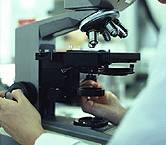
WEDNESDAY, April 7 (HealthDay News) — Blood vessels engineered from laboratory-grown stem cells have worked well in animals, researchers say, and might someday replace the synthetic products now in use.
When needed for procedures such as bypass surgery, blood vessels now are usually taken from the person’s body. Artificial grafts are used about 40 percent of the time, but those grafts are far from perfect, explained Stephen E. McIlhenny, a postdoctoral researcher at Thomas Jefferson University Hospital in Philadelphia. He was scheduled to report on the advance at an American Heart Association conference Thursday in San Francisco.
Artificial vessels “never become arterial-like,” McIlhenny said. “They have been shown to close readily within one to three years, and they never contract or otherwise respond to changes in blood pressure.”
By contrast, the tissue-engineered blood vessels that have been successfully tested in animals do behave more like the real thing because “they contain components of the natural artery,” McIlhenny said.
The process of building such blood vessels starts with the extraction of human fat tissue from the region around the belly button, he said. “We isolate the cellular fraction of the tissue and further purify it,” McIlhenny explained. “Then we differentiate them by cellular and mechanical means. These stem cells acquire the markers of the endothelial cells that line the interior of arteries.”
The cells then are grown on a scaffold consisting of protein. The result is “a biological conduit that is more biomedical in nature than synthetic material,” McIlhenny said.
The work done by the Thomas Jefferson researchers involved 10 rabbits. Five had stem-cell-derived grafts inserted in the aorta, the main heart artery, and five had grafts of the bare protein scaffold. After eight weeks, the five scaffold grafts showed the kind of thickening seen in human heart disease and evidence of blood clots, while the engineered grafts had significantly fewer signs of such problems, McIlhenny said.
He described the study as just the first step on a long road that could eventually lead to the use of engineered grafts in humans. Next will be a test of the grafts in larger animals, probably dogs. The series of experiments designed to lead to first human trials will take at least three years, McIlhenny said.
When and if they occur, the initial human trials would not use the engineered grafts for bypass procedures in the heart, he said. Instead, they might be tested in bypass procedures for peripheral arterial disease, which is blockage of arteries in the legs. They might also be tried as replacements for the synthetic vessels now used as connections to artificial kidneys for people who undergo dialysis.
Dr. Robert A. Hegele, co-chairman of the San Francisco conference and a professor of medicine and biochemistry at the University of Western Ontario, in Canada, said that better grafts for bypass surgery and other uses are highly desirable because of the high failure rate of those now used when natural blood vessels are not available. The failure rate ranges from 20 to 60 percent in a single year, he said.
Several efforts are underway to make better graft vessels through bioengineering, Hegele said. An intriguing aspect of the work at Thomas Jefferson, he said, is that it starts with easily obtainable fat cells, whereas others are relying on less available sources of cells, such as bone marrow.
More information
The U.S. National Library of Medicine has more on bypass surgery.

